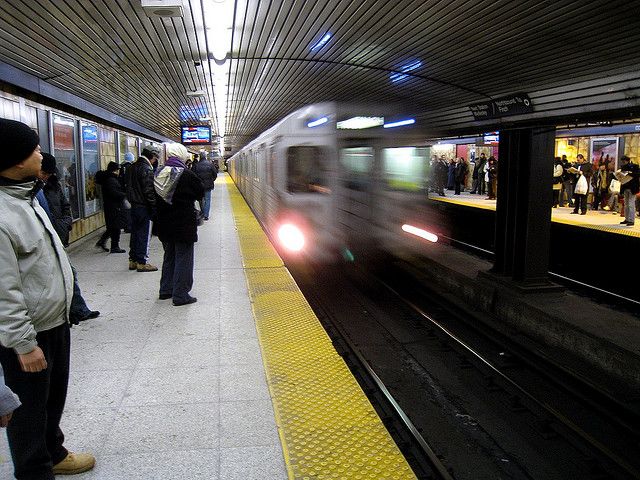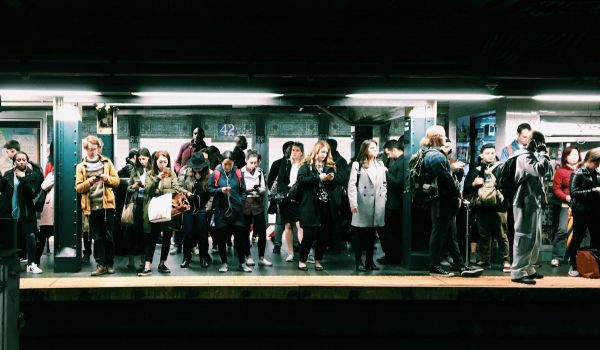Canada’s largest city may be experiencing the most intense public transportation-related psychodrama in North America. Five years after Toronto Mayor David Miller unveiled his Transit City proposal for a citywide network of light rail lines, two years after Ontario government agreed to fund half of them, and one year after a new mayor announced that “Transit City is Dead,” the project finally appears to be moving forward. A unanimous vote by Toronto regional transportation officials on Wednesday cleared the way for C$8.4 billion in new transit investments between now and 2020.
In the process, conservative Mayor Rob Ford, whose antipathy towards alternative transportation modes verged on the truly anti-urban, has lost his influence. It’s an exciting step for a city that has wavered wildly on transportation issues over the past decade, but which is in need of better public transit.
Before describing the process by which the city endorsed, then rejected, then came back to approving the Transit City plan, the full extent of the 75-kilometer system proposed for the city should be described. At the heart of the network is the Eglinton Crosstown project, which will run east-west 25 kilometers through the center of the city, offering an alternative to the over-capacity Bloor-Danforth Subway; about half of the alignment will be underground, with the other half above surface. Two other routes will bring surface light rail lines to suburban arterials. And the Scarborough RT, transit service not unlike the Vancouver SkyTrain (though not automated), will be replaced and extended by a new elevated light rail line. Together, the projects will provide relief for a series of neighborhoods with lower densities than the center of the city.
Construction on the Eglinton project is already underway. The other lines will begin in 2014 and 2015, in time for a system-wide completion by 2020.
What Transit City is not is a project designed to serve the needs of downtown commuters, who will remain served primarily by the same two subway lines, first constructed opened in the 1950s and ’60s, and an aging network of streetcars. Nor will it connect to the airport or along a number of north-south routes proposed in the initial Transit City plan (on the Don Mills, Jane and Malvern corridors).
Yet the investment plan remains a very significant improvement for Toronto, which now can boast of the continent’s second-largest funded rail transit expansion plan by route miles (after Los Angeles).
In 2007, Miller took a wild step in announcing that he wanted to bring to fruition a network of eight new light rail corridors along 120 kilometers to serve parts of the city that did not — and like would not, due to density — get new subway service. The Transit City appellation was apt, since what the mayor was proposing was a reorientation of virtually all of the city’s neighborhoods toward new high-capacity rail corridors.
It was a dramatic bet, since Miller did not have the funds to build any of it. By early 2009, though, he had convinced Ontario Premier Dalton McGuinty to devote C$3 billion to the program, and by summer, all four of the lines that are in the current plans were funded. It was an arrangement only made possible because of considerable political entrepreneurship. Miller made transit expansion a serious matter by getting a big vision into the minds of the city’s population, and Mr. McGuinty, with the funds, was convinced to pay up. It’s a model other cities could learn from.
By early 2010, after Miller decided not to run for election, contenders for the mayor’s office began suggesting their opposition to Transit City, noting the fact that light rail would require surface construction* and the removal of car lanes (despite the ample space available on Toronto’s wide arterials). Rocco Rossi, once seen as a front-runner for the position, said he would put a moratorium on light rail project development were he to win. Rob Ford ran an aggressive campaign premised on attracting the support of city residents far from downtown (“suburbanites” in Toronto parlance) in which he proposed eliminating the city’s streetcars, relegating bikes to nature paths, and replacing the light rail plans with subways, which he claimed were more in sync with the city’s mentality. In other words, they were more in sync with the city’s drivers.
Ford won. He used his election as evidence that the city’s residents abhorred the idea of building more light rail and announced that he had canceled Transit City immediately. In March of last year, he signed an agreement with the Ontario government that eliminated the Finch light rail line (in favor of the mythical “better bus”), pushed the Eglinton Line fully underground and promised to build an extension of the Sheppard Subway, rather than a surface light rail line as had been previously proposed. The problems were twofold: The new transit lines would serve far fewer people than Miller’s proposal, at a higher cost; and there was no funding for the new Sheppard Subway because of the massive cost increase Ford subjected to the Eglinton Line because of his insistence that it be placed underground.
By summer 2011, it was clear that the “private partners” Ford wanted to pay for Sheppard Line were imaginary. The city was thus left with only the Eglinton Line and Scarborough Lines, 43 kilometers of new routes when it had once had 75 kilometers on the books. It was a waste of money and a disappointment for commuters.
These facts were impossible to ignore, and the city council rebelled. In January, Counselor Karen Stintz took charge, essentially dismissing Ford’s argument in favor of subways. In February and March, the council determined that Ford had acted without the council’s advice in dismissing Transit City and they returned their support to the previous plan, despite the mayor’s vocal outrage. Metrolinx, the regional transportation body, released its study of the issue, agreeing with the council, and the body’s governing board action earlier today means that Transit City’s 75 kilometers, most of which will be surface-running light rail, will be built. The Sheppard Avenue line will open in 2018, four years after it was supposed to.
Unsurprisingly perhaps, this sage is not over, thanks to the obstreperous Ford, who is so devoted to the subway concept and the need to keep trains out of the street that he plans to make subways an election issue once again in the 2014 election, even though construction will have begun on several lines by that point. For the sake of Toronto’s near-term future, one hopes he doesn’t get the opportunity.
Oddly enough, the success of proponents of the light rail scheme in pulling together support for their project has encouraged others to note that the project’s shortcomings — notably its failure to mitigate the congestion on transit lines downtown — will remain struggles for this region after 2020. The redevelopment of Union Station and the improvement of GO commuter rail service, in addition to the demand from the new light rail lines, will overload the subway system. Thus the long sought-after Downtown Relief Line, which would double the Bloor-Danforth line downtown, has been brought up again by official).pdf and non-official sources. The paradox of investing in investing in new transit capacity is that more capacity brings more ridership. Yet that is a problem for another generation of leaders to solve.
Examining Toronto’s history, it is difficult to ignore referencing parallels to New Jersey, or Wisconsin, or Florida, where the entry of new conservative governors hostile to the idea of spending public funds on major new rail programs resulted in the cancellation of projects that would have cost those states very little in terms of actual expenditures had they been built. One hopes that, as in Toronto, the need to make rational investments in transportation will become clearer over time.
*This was a significant concern for residents of the city at the time due to the construction mess between 2006 and 2010 caused by the reconstruction of the St. Clair Streetcar to provide it dedicated lanes in its right of way.

Yonah Freemark is a senior research associate in the Metropolitan Housing and Communities Policy Center at the Urban Institute, where he is the research director of the Land Use Lab at Urban. His research focuses on the intersection of land use, affordable housing, transportation, and governance.
















